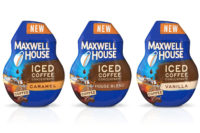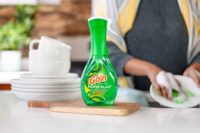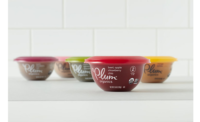Flexible Packaging recently caught up with Jim Russell, president, Modern Manufacturing, to get his take on all things pouch making.
Q: What’s new with bag/pouch making, both as it pertains to your company and to the flexible packaging industry?
A: New and innovative designs for pouch forms/shapes that provide a unique customer and user experience are pushing the industry to become more creative on both the production and retail fronts. We’ve been issued several patents recently for both pouch forming and production that will provide more ways for converters to market their products. These new patents are aimed to change the way standup pouches are produced and filled, as they will allow the transverse method of standup pouch making, which will allow the pouches to remain connected in a roll form. This simplifies the filling process without the expense and complications of form-fill-seal.
This patented “Roll Pouch” system truly represents the best features available of both the premade and form-fill-seal technologies, as combining these features increases efficiency and consistency while providing significant cost savings and shrinking the return-on-investment window. It utilizes a unique process technology for making the premade pouches while leaving the pouches on a roll for greater ease and less handling at the filling process. The system manufactures the pouches on a roll from a premade pouch line, in a transverse method, which simply allows the pouches the ability to be unwound end-to-end for the filling process. This ensures all the benefits and flexibility of premade pouching remain while the end user benefits from a simplified, efficient method to process and fill the pouches once the pouch is produced.
One of the key benefits to the system’s premade pouch-making flexibility is the ability to offer easy setup and changeovers for multiple pouch sizes and configurations and increased production rates of up to 400 pouches per minute. Quality control is easily managed because you are not filling the pouch at the same time you are forming it, as you would in a form-fill-seal method. This leaves room for multiple inspection points and methods prior to the filling operation.
Q: Reducing scrap and setup times is crucial. What things are being done to achieve the aforementioned, and can you quantify just how much this benefits the converter?
A: Modern has the benefit of employing engineers who have worked for decades in the converting industry. As a result, the designs and assemblies that we produce are the result of applying those years of converting experience to manufacture equipment that is both efficient and operator friendly. For example, we employ many key features that reduce the setup time across the board from one pouch to another. This is accomplished through the details in each and every key adjustment point on the machines we offer. In our machines, tooling is designed to be toolless changeovers, sealing heads are aligned to each other and tied together so movement is possible with one hand wheel, job storage is able to be saved and retrieved and there are precalculated positioning routines to help with setup positioning. We’ve been told that Modern machines help reduce converter setups by more than 70 percent, resulting in less scrap and faster ROI.
Q: How much of a focus is there on developing faster bag/pouch lines? Is this a big “want” from converters?
A: Speed isn’t everything. You see, once you reach a certain speed, the pouches can no longer be handled/packed by a single operator. In many cases, converters are willing to sacrifice speed of operation for the ability to have a single operator. There is a cost/benefit ratio that begins to realign when you begin adding more personnel to the equation. Having said that, there are also converters that require higher volume production. As a result, we’ve developed a patented method to produce upwards of 400 pouches per minute while still allowing the machine to be run by a single operator.
Q: Aside from developing faster machines, is there anything else that converters desire to see in future bag/pouch machines?
A: Fitments, fitments and more fitments. Consumers are finally seeing flexible packaging as a considerable reduction in carbon footprint over traditional/rigid packaging methods. This has created new opportunities for pouch converters – many of which require an integral fitment for filling and closure. For many years now, we have seen boxes of wine. We expect that business to grow into new consumer markets along with the corner and top fitment pouches. Our latest addition to the evolution of pouch making is just the type of innovative thinking that converters are looking for to give them a competitive advantage. This technology allows high-volume production of standup pouches while being able to insert and seal the fitments in line. This eliminates the secondary operation while increasing the throughput of up to 150 fitment pouches per minute.
Q: Is there anything else you’d like to share about bag/pouch making?
A: Bag and pouch making is still taking many twists and turns for emerging niche markets. As these niche markets evolve, we will continue to see product evolution and technology advancements in almost all of the flexible packaging fields.
Modern Manufacturing
(585) 289-4261
www.modernmfg.net






